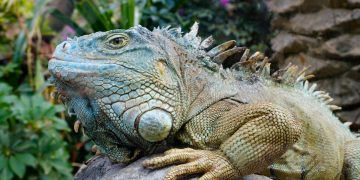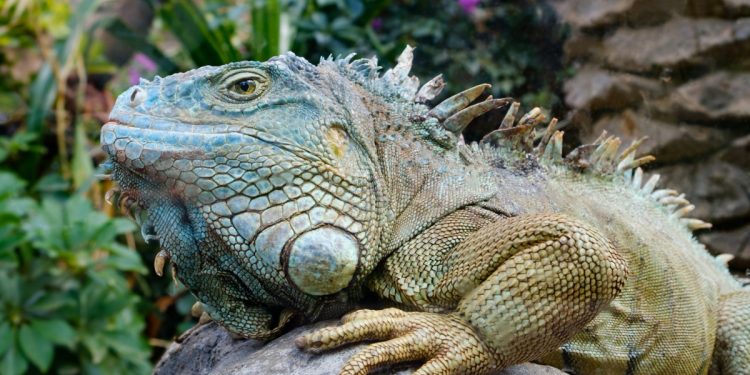A suitable habitat, quality food in line with its needs, regular care… If the iguana benefits from all this, it has every chance of living a long and healthy life. However, no animal is completely immune to a virus, infection or accident. Let’s see the most common diseases in the iguana.
During its long life, your iguana can suffer from various pathologies. They are generally the result of poor living conditions. They lead to digestive, dermatological, oral and even tumor problems. You must be ready to intervene. The objective here is to help you quickly detect an illness and remedy it. The earlier the treatment, the greater the chances of recovery. What are the common diseases that can affect the iguana? How to preserve your health?
Symptoms of illness in your iguana
Take your iguana to your reptile veterinarian immediately if yours exhibits one or more of the symptoms described.
Your iguana may be suffering from a lack of appetite, leading to weight loss. He may also remain prostrate longer than usual, not be as lively and alert, and therefore be lethargic. Your iguana may have sores on the surface of its skin. Its scales may no longer be so shiny.
You notice swelling in a finger, a sign of a potential fracture, the result of osteofibrosis and calcium deficiency. Your reptile may pass watery stools or may not pass stools for a while. We may talk about diarrhea or, conversely, constipation. At the respiratory level, it can be subject to some difficulties in some cases.
Osteofibrosis
It results from malnutrition. Your iguana suffers from nutrient deficiencies, but especially vitamins and calcium. You have probably given too much lettuce or food that does not meet the energy needs and morphology of your reptile. Your iguana thus presents swollen limbs due to fractures which occur more and more easily.
Constipation
Constipation is ailment that frequently gnaws the iguana. It can come from a poor diet, too dry food, a lack of fiber, a temperature of the terrarium, but also too low a body temperature, indigestion or even a lack of water. Your veterinarian will surely prescribe a warm bath treatment, and a change in his diet.
infectious stomatitis
Stress plays a big role in the appearance of this disease which causes swelling of the jaw, hypersalivation, loss of appetite and weight loss. It can come from a poor diet, poor regulation of body temperature, but also from parasites. Stomatitis can appear following an abrasion of the rostrum of the face of your iguana. Treatment must begin quickly to avoid any sequelae and disfigurement.
Bowel blockage or obstruction
Your iguana tends to eat what it can find in its path, whether it is the substrate at the bottom of its terrarium or objects that it can find here and there outside its territory. Your reptile will be lethargic, stop eating and lose weight. He will also occasionally regurgitate. Your veterinarian will perform a CT scan and an X-ray to validate his diagnosis. Treatment will depend on the nature of the obstruction.
Dystocia
This is a laying problem. The appearance of dystocia is related to the environment of your iguana. Stress, poor temperature of its terrarium, lack of humidity, malnutrition are often observed. The symptoms are not all obvious and only an X-ray or an ultrasound can confirm that it is indeed obstructed labor. The plasma will be biochemically analyzed to detect the causes of the onset of the disease.
Hind limb paralysis
This paralysis results from a lack of vitamin B1. In fact, your veterinarian will perform an injection of minerals and vitamins. You will have to make a change in your reptile’s diet.
Read also: Keep your iguana
Parasitic diseases
They are mainly the result of poor maintenance of the terrarium. You probably don’t clean it enough, or not well enough. Parasites infect your iguana’s intestines. They can cause diarrhea which tends to severely dehydrate your reptile. Without rapid intervention, he could die. The absence of symptoms can also prevent you from knowing that your iguana is infected with parasites.
Conversely, external parasites can be noticed on its skin, between its scales.












